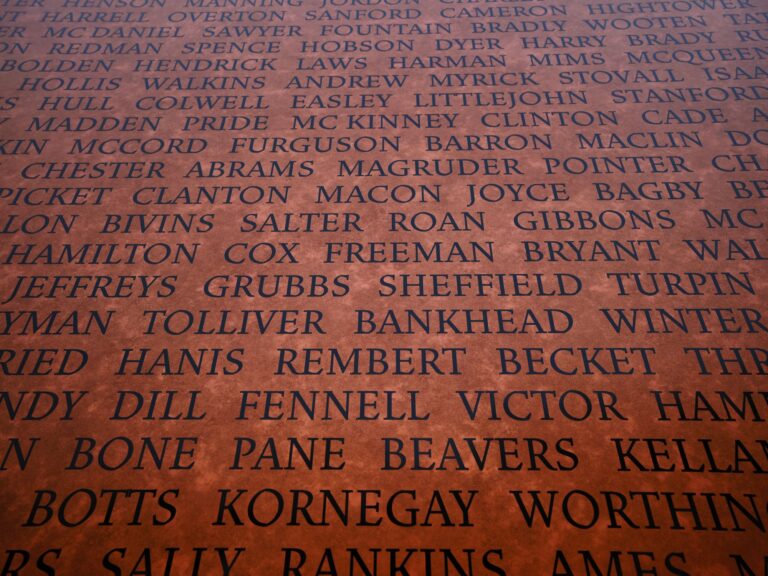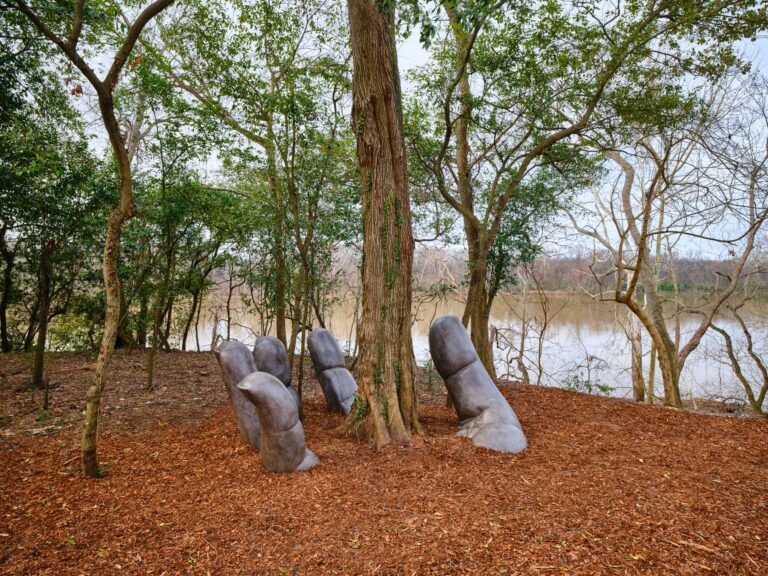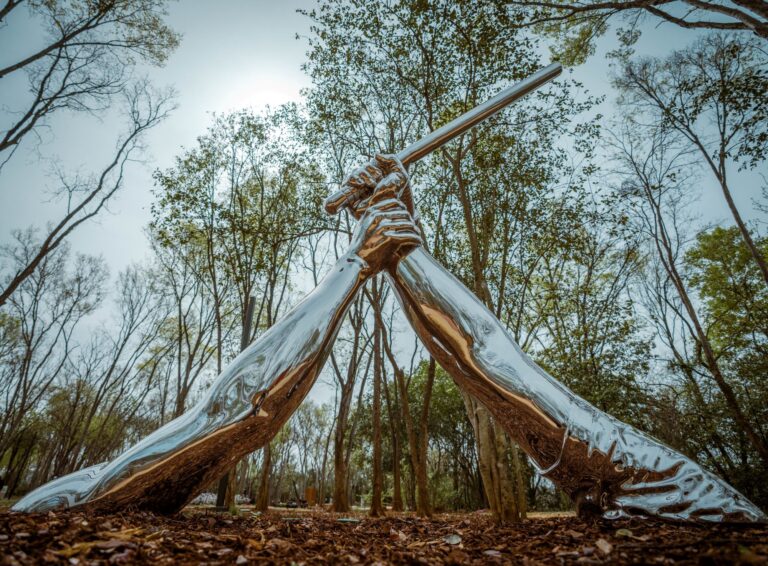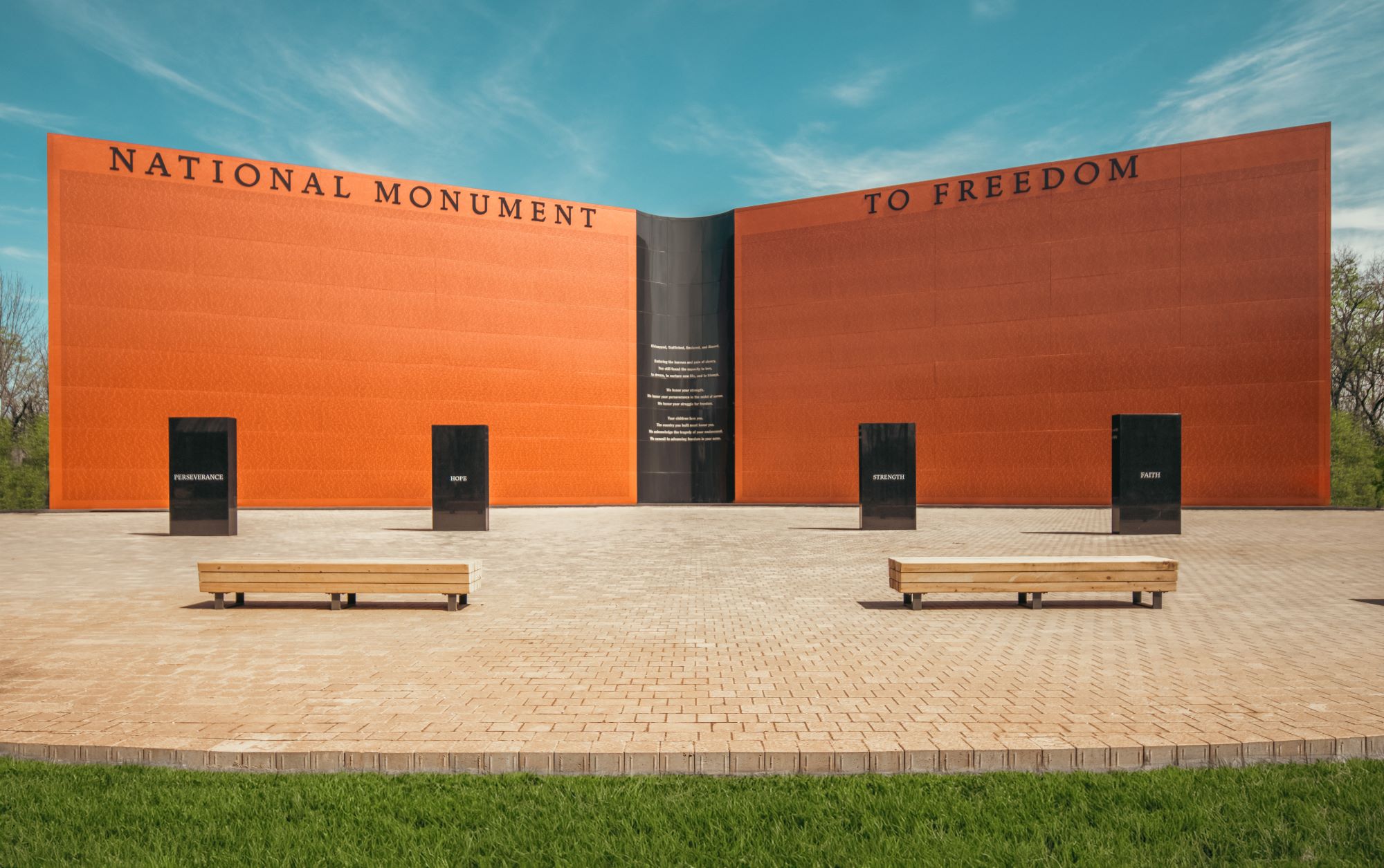Freedom Monument Sculpture Park in Montgomery to Honor Victims of Slavery
The park features sculptures and wall with 122,000 surnames of the 4.7 million people formerly enslaved recorded in the 1870 Census.

Get stories like this delivered straight to your inbox. Sign up for The 74 Newsletter
The Equal Justice Initiative will soon open a third site in the Montgomery area memorializing victims of racial violence.
Freedom Monument Sculpture Park, a 17-acre site located on the banks of the Alabama River on the north side of Montgomery, focuses on American slavery. Bryan Stevenson, the executive director of EJI, said the site aims to convey the brutality and horror of American slavery, and the resilience and hope of those in it.
“With any honesty about the lives of enslaved people, it is not just Alabama, it is all across this country, that we don’t have a very extensive or developed record about the experience of being enslaved, about living through enslavement, and about the legacy of slavery,” he said on Monday.
The park is scheduled to open to the public by the end of the month.
Montgomery was a major center of slavery and the domestic slave trade. In 1860, 23,710 people in the county — 66% of the population — were enslaved. The city served as the first capital of the Confederacy. According to EJI, some 400,000 people were held in bondage along the Alabama River just prior to the Civil War. The nonprofit says that rail lines near the park were built by enslaved people in the 1850s, and were used in the buying and selling of human beings.
The Black community in the city maintained a long tradition of activism, leading to the Montgomery Bus Boycott in 1955 and the Selma-to-Montgomery march in 1965, both key events in the modern civil rights movement.

“Montgomery, for a long time, has defined itself as the Cradle of the Confederacy, the heart of Dixie, which means we are centered in a space that, in many ways, connects to the challenges that we are trying to address and educate people about,” Stevenson said. “But I also think Montgomery has an important role to play in leading the nation.”
The opening of the park is one of the most highly anticipated events of the year, so much so that The New York Times featured Montgomery as one of the best places to visit in 2024.
Freedom Monument Sculpture Park serves to complement and build on the themes that are present at the other two EJI sites located within the city. The Legacy Museum looks at the history of slavery, segregation and mass incarceration and explores their impact on Black Americans and the nation as a whole.
The National Memorial for Peace and Justice, which opened to national acclaim in 2018, honors victims of lynching in the United States. There are sculptures and features placed within the space that testify to the experiences of those who died and the impact it had for their loved ones.
“I still felt there was a need to have something that you could experience the legacy of slavery around,” Stevenson said. “I have been around to the plantations that exist in this country, and to be honest, I don’t think any really, honestly, present the story of slavery centered on the lives of enslaved people.”
The park is laid out in a circular path that traces the history of the institution of slavery and begins with the transatlantic passage of people kidnapped from Africa to be sold into bondage.
Visitors are presented with information about their ultimate destination in the country, from the south to even as far north as counties in New Jersey.
Further down the path, visitors encounter displays on how people were trafficked to Montgomery to be sold. There is a rail car on the grounds that people can walk into and experience how slaves traveled centuries ago.
The Freedom Monument Sculpture Park includes two 170-year-old dwellings from a plantation in Alabama where enslaved families lived for generations. The third dwelling is a replica that reveals the most common size and design of dwellings.
The site also includes a whipping post to give people a sense of the agony that people who were enslaved had to endure when they were punished.

Sculptures
The park features sculptures from different artists — many African American, African or indigenous — that focus on different aspects of slavery, from the brutality of bondage to the courage of the enslaved. The park is designed to mix art and history in depicting the struggles of those seeking freedom and justice.
One sculpture places fingers around a tree growing from the ground, was done by Eva Oertli and Beat Huber is called “The Caring Hand.” A second statue features two arms with one holding a club is called “Strike” by Hank Willis Thomas.
The park also includes bricks made by enslaved people 175 years ago that visitors will be able to touch, as well as chains used to traffic the enslaved.

The main attraction is a 50-foot-tall monument listing 122,000 surnames of the 4.7 million slaves living in the nation according to the 1870 Census, the first taken after slavery and the first that recorded the names of former slaves.
Visitors descended from enslaved people can use a website to trace where their ancestors lived. They can also stop by the visitor center to research the different locations where slaves lived and find the surnames of those who lived in those locations.
“The most extraordinary thing, I think, about people who were enslaved in this country is they are people who learned to love in the midst of sorrow,” Stevenson said. “I would not be here if my enslaved fore parents had not found a way to love in the midst of sorrow, to create something hopeful, like a family, like a future, despite the brutality.”

Alabama Reflector is part of States Newsroom, a nonprofit news network supported by grants and a coalition of donors as a 501c(3) public charity. Alabama Reflector maintains editorial independence. Contact Editor Brian Lyman for questions: [email protected]. Follow Alabama Reflector on Facebook and Twitter.
Get stories like these delivered straight to your inbox. Sign up for The 74 Newsletter

;)